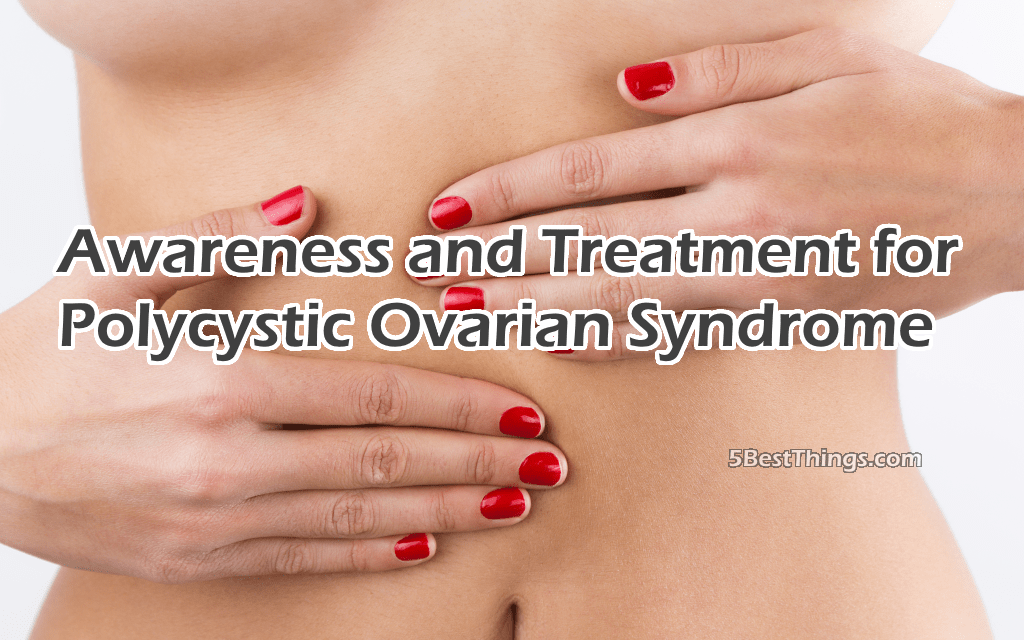Polycystic ovarian syndrome is where the sex hormones of the woman that is her estrogen and progesterone levels are out of balance. This could affect her fertility, her menstrual cycle as well as her appearance. The imbalance in hormone causes the growth of ovarian cysts.
Causes of Polycystic ovarian syndrome or PCOs.
Even though there is no clear reason why a woman develops PCOs , doctors believe that this is because of a hormonal imbalance and also because of some genetic factors. Those whose mother or sister had a case of PCOs are highly likely to develop the condition herself.
Another reason for PCOS could be because of the overproduction of androgen. This is a male hormone that is produced by a woman’s body as well. When a woman produces more than the normal levels of androgen, this could lead to PCOS. Androgen affects the development as well as the release of the egg during ovulation. The reason for high levels of androgen production could be because of excess insulin.
Symptoms of PCOs
It is important to spread PCOs awareness so that women can know the PCOs symptoms and get them treated immediately. The symptoms of PCOs start to show when a woman begins to menstruate. The symptoms and its severity could vary from one person to the other. However, the most common sign is irregular menstrual periods.
The condition is caused because of a decrease in the female sex hormones and thus a woman may develop some masculine characteristics like:
Deeper voice
Decrease in the size of her breasts
Hair loss
Excess hair on the chest, thumbs, face or stomach
Other signs to watch out for are:
·Weight gain
·Infertility
·Depression
·Pelvic pain
·Acne
Weight gain in women with PCOS could also lead to continuous health issues like high cholesterol, hypertension and diabetes.
Diagnosing PCOs.
The doctor will first go through the medical history and the symptoms and will try to rule out any other condition. A pelvic and physical examination is then carried out to look for the signs of PCOs. The signs could be swollen clitoris or ovaries.
The woman may also be asked to do certain tests like:
Blood tests to measure the sex hormone level
Thyroid function test to check how much thyroid hormone the body produces
Fasting glucose test to measure the blood sugar levels;
Lipid level test to check the amount of cholesterol levels
Vaginal ultrasound helps to get the real time images of the reproductive organs
Pelvic laparoscopy in which the doctor makes a small cut in the abdomen and inserts a camera to check the ovaries growth. If there is any growth then a small tissue sample is used to do further examination
Treatment
The treatment for PCOs helps to control its symptoms and manage the condition in order to prevent any further complications. The cure given out will depend from one patient to another based on the symptoms. PCOs can be controlled by:
Eating healthy diet and doing regular exercise. This is particularly useful for those who are overweight. It helps to lower the blood glucose levels and regulates the menstrual cycle Taking birth control pills help to treat acne and lower the levels of male hormone such as testosterone. The woman may also be prescribed fertility drugs to aid ovulation in case she is infertile.
The woman may also be prescribed anti-androgens drugs that help to reduce the male hormones. This can prevent excess hair growth and reduces acne.
Some women may also have to undergo a surgery. It is an ovarian drilling procedure in which the doctor punctures the ovary with a small needle that carries an electric current. This method helps to destroy part of the ovary. The method may reduce the male hormone levels and can also promote ovulation.
It is important to note that the symptoms of PCOs can be controlled but cannot be treated completely.



